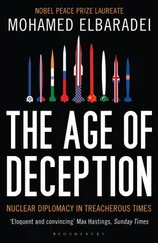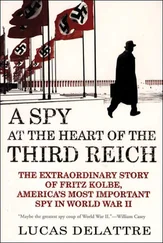It is also necessary to understate some bits of a successful operation. If the key to cracking the spy ring was a flaw in Russian tradecraft, it would be a mistake to highlight it: after all, the other side may make the same mistake again. If the vulnerability came from code cracking, that too must be concealed. If the clues came from a penetration agent in Moscow, his welfare must be weighed against the need to curb or catch the spies he has betrayed. Is he so valuable, and will he be at such great risk, that he must be exfiltrated before the spycatchers pounce on their quarry or limit his activities? Protecting him may set off alarm bells and send the hostile agents scurrying into hiding. The spycatchers’ nightmare is a failure on all fronts: damage done, the horse bolted, and nothing gained.
America’s criminal complaints against the illegals were nicely balanced. They trumpeted the Bureau’s success, humiliated the Russian side, but gave away rather little about sources and methods. It is not clear, for example, how the FBI obtained the ‘was it in Beijing?’ code word that one of its agents used to gain the confidence of Mikhail Semenko, a Russian working under his own name in Washington DC. They put heavy emphasis on traditional surveillance: bugging phones, entering premises with a search warrant, looking at safety-deposit boxes. That the FBI can do that will surprise nobody. They highlight what look like some bad mistakes in the Russians’ tradecraft. Donald Heathfield’s wife had a photographic negative in a safety deposit box that bore a Russian brand name, Tasma (TACMA in Cyrillic). For someone purporting, as she did, to be a Canadian real estate agent, that was a huge breach in a cover story. Another of the illegals is said to have written a vital email password on a bit of paper next to a computer, which was noted by FBI agents during a clandestine visit to the apartment. If these blunders indeed happened, those in the Russian intelligence headquarters in Yasenevo responsible for training illegals will be unpleasantly surprised. [31] ae Known as the ‘Forest’ or the ‘Sanatorium’, the SVR headquarters is a Finnish-built skyscraper complex in the district of Yasenevo, just south of the Moscow ring-road.
But the FBI may have exaggerated or misleadingly portrayed the slip-ups. During their debriefing sessions the agents may deny having made these errors. Ideally, both their competence and their loyalty will be questioned.
The complaints published by the American authorities are also interesting for what they do not say. They do not give any detailed account of the illegals’ tasking: what were they really trying to do, and how? The overall instruction is to create convincing cover stories: but for what purpose? Heathfield is said to have tried to find out about America’s bunker-busting bombs. The complaint alludes indirectly to his attempts to befriend Leon Fuerth, a former senior administration official, and to contacts between ‘Cynthia Murphy’ and a Democratic Party bigwig (which I cover in more detail in the next chapter). The reader learns a lot – perhaps a surprising amount for those unused to the spy world – about the mechanics of spying: the cover stories, the foreign travel, the code words and the use of laptops. He learns very little about the substance.
The official explanation is that the Russian illegals indeed failed to make any real headway in America. They consumed much of Moscow’s money and time, but succeeded only in infiltrating suburbia. A neat twist in this portrayal is that even this bit of the Russians’ mission looks unsuccessful. They may have deceived their neighbours, but from the very beginning they were under the eagle-eyed scrutiny of the FBI. Nobody in America needs to feel embarrassed, because no secrets were stolen. That is comforting but not wholly plausible. For a start, the idea that the FBI and its overseas partner agencies would manage (or want) to keep ten people, some of them seasoned intelligence officers, under constant surveillance in multiple countries for a period of many years is fanciful. Even for a well-funded US government agency, the cost in time and money would be colossal. More to the point, it would be risky: a small slip-up would set alarm bells ringing in Moscow and quite possibly lead to the quarry vanishing. It is more likely that only some were under long-term surveillance and that even this was not constant. It is probable that all ten came under complete observation only at the end.
Establishing assets able to move easily in a hostile environment is in itself a major achievement for an intelligence service. Whether they were spotting potential recruitment targets, collecting information, or servicing other agents, the illegals’ activities cannot be regarded as harmless or benign. As I show later, even the junior Ms Chapman had previously helped out with a questionable money-transfer operation, involving apparent identity theft and other shenanigans. It is hard to believe that all her counterparts in America were less active. She and Mikhail Semenko were regularly conducting secret communications with Russian intelligence officers. It is unlikely that they were merely exchanging test transmissions or remarks about the weather.
Another factor that may have sanitised the FBI’s account of the illegals’ activities is the political climate. Anybody who had fallen seriously into the clutches of one of these illegals would be unhappy to have the fact broadcast. Humiliating influential people by highlighting their cooperation with Russian espionage would be a mistake on almost any count. It would make unnecessary enemies – something that an agency with acute political antennae knows to avoid. It would raise the question of whether these individuals should be prosecuted, with all the embarrassment and unwelcome publicity involved. Nor would the FBI see any great need to make an example, assuming such people are dupes, not traitors. The Bureau could just identify the people acting as sources for the illegals and deliver a quiet but sorrowful warning, explaining that they were on a slippery slope that could have all too easily ended up in disgrace or jail. Such a conversation would almost certainly end with an admonition to discuss its content with nobody – a course of action strongly in the interests of both sides. In short: absence of evidence that the illegals were effective is not the same as evidence that they were not.
A second political dimension is US–Russian relations. As noted earlier, for all its shortcomings, the ‘reset’ is one of the few bits of Mr Obama’s foreign policy to have shown any sign of success. Although the White House could not ignore the FBI’s evidence of extensive and potentially damaging Russian espionage, it would be quite natural for the country’s political leaders to try to limit the wider diplomatic fallout by presenting the illegals as more comic than sinister. Were the public to believe that the spies had done serious harm to the nation’s interests, it would be a lot harder to explain why senior figures in the administration saw fit to hobnob so cordially with their Russian counterparts.
For all these reasons, the illegals’ arrest was presented to avoid any great sense of alarm or urgency. The message from background briefings was of patronising sorrow rather than anger: it was a pity that Russia still felt the need to play these strange old-fashioned games, both because of what it said about the thinking in Moscow and also because these fossilised spies – sad relics of the old days of superpower rivalry – had achieved so little. Yet as I show in the next chapter, the illegals’ activity in America and elsewhere gives no grounds for such complacency.
Gathered in the same room, Richard and Cynthia Murphy, Donald Heathfield and Anne Foley, Juan Lazaro, Vicky Peláez, Michael Zottoli and Patricia Mills, Mikhail Semenko and Anna Chapman would have seemed like a bunch of unremarkable Americans. They spoke English fluently, with varying accents; they had jobs ranging from the humdrum to the glamorous. Their neighbours and work colleagues noticed nothing extraordinary about them. But when they did meet for the first time, it was in a courtroom, shortly before their deportation to Russia. The ten were at the centre of the FBI’s most spectacular and successful counter-intelligence operation for decades: Operation Ghost Stories. According to the American authorities’ criminal complaints, they and persons unknown
Читать дальше












